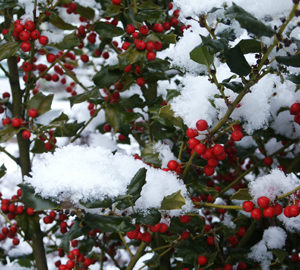
We’ve had several recent snowstorms, which have brought our fall leaf raking to a halt. Many friends and neighbors do not rake their leaves and some gardening experts are definitely against it.
However, the main reason we like to rake is not to remove every single leaf but to make it easier for our spring early bloomers, like the Siberian squill (Scilla siberica), to emerge and flower.
In fact, the leaves of our grape hyacinths (Muscari armniacum) always emerge in the fall, making them among the earliest of our spring bloomers in the gardens. And, we’ve had some Snowdrops (Galanthus) bloom in early March!
Our street has many beautiful old oak trees that shed seemingly millions of leaves that “mat down” – sometimes creating impenetrable challenges for our early floral spring visitors unless we do some raking in the fall.
There are those who hate the grape hyacinths and consider them invasive. But, that’s another story for another time.
Incidentally, another reason my hubby enjoyed leaf raking this season was that he found a $20 bill in a pile of leaves that had accumulated on our front sidewalk.
The snow does make a pretty background for the red berries on our English hollies (Ilex aquifolium). Branches of the red twig dogwood (Cornus sericea) really stand out, too, especially since our friend Sean helped us prune out all the old thick brown branches.
The hummingbird feeders were taken down, cleaned and stored away. A squirrel-proof seed feeder has been hung just outside our kitchen window and a suet feeder attracts many of our feathered friends.
It’s so easy to open the window to refill them, rather than having to go outside like we used to do in the old days. We never hang seed feeders in the summer any more. We want the birds to eat the bugs!
Of course, the best news is that the snow and cold have killed the Eastern equine encephalitis virus-carrying mosquitoes – no longer posing a threat (until next summer).
Our wonderful mailman keeps delivering new seed and plant catalogs as well as calendars. The 2020 UMass Garden Calendar is our favorite with its beautiful photos and daily gardening tips and reminders for our Northeast growing conditions.
It also provides daily sunrise and sunset times and phases of the moon with plenty of room for writing notes.
Ah, yes! The year is drawing to a close and 2020 is just around the corner.

